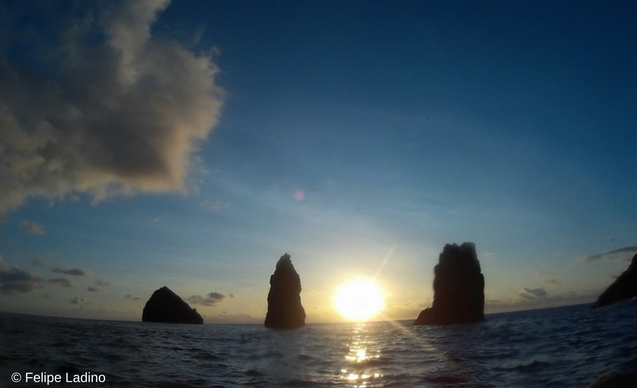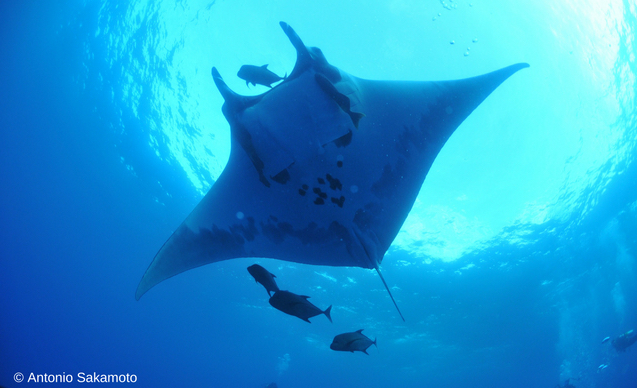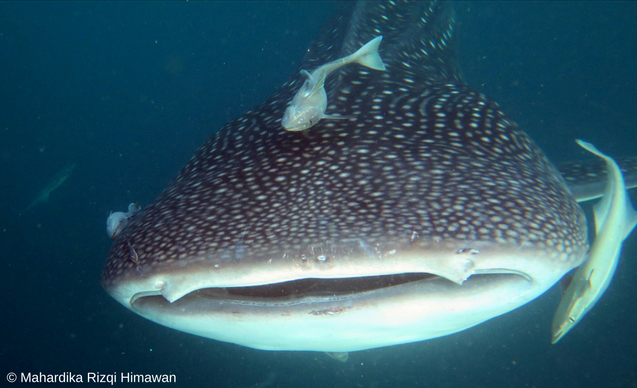
Vital data generated by the satellite and acoustic tagging work undertaken by a CLP-funded project team monitoring the movements of whale sharks and other migratory species between remote offshore islands in Mexico and Colombia has helped to persuade the Colombian government to quadruple the size of a key marine protected area.
Reputed to be one of the best dive sites in the world, Colombia’s Santuario de Flora y Fauna de Malpelo (Malpelo) provides a globally important refuge for large concentrations of sharks, rays and other threatened species. Since it was first declared a marine protected area in 1995, Malpelo has been progressively extended. By the time it was designated as a World Heritage site in 2006, it covered 6,763 km2.
In September 2016, Colombia’s president Juan Manuel Santos Calderón announced that the protected area would be increased fourfold to 27,000 km2 by the end of the year. The announcement was hailed as a positive step towards the wider goal of ensuring that at least 10% of these countries’ biologically important coastal and marine zones are formally protected by the year 2020.

Malpelo harbours an estimated 1,500 species, nine of which occur nowhere else on the planet and around 40 of which are classified as threatened with extinction. It forms part of a chain of protected areas – known collectively as the Tropical East Pacific Marine Corridor (CMAR) – that also includes Cocos Island (Costa Rica), Coiba (Panama), Gorgona (Colombia) and the more familiar Galápagos Islands (Ecuador).
The purpose of the corridor is to promote the conservation of marine species, particularly long-distant migrants that occur in large aggregations. Scientists in the region are employing satellite telemetry and photo identification techniques to study patterns of movement among these species. Ultimately, the aim is to extend the corridor as far as Mexico’s remote Revillagigedo archipelago, a group of four volcanic islands renowned for their unique ecosystem.
With support from the Conservation Leadership Programme (CLP) a project team from Mexican NGO Pelagios Kakunjá and the Colombia-based Fundación Malpelo has been compiling data to demonstrate the connectivity between this area and the other islands in the CMAR and, in particular, to evaluate the connectivity between whale sharks populations in Mexico and Colombia.

Until now, a lack of baseline information has been a major obstacle to the implementation of effective management strategies for the conservation of sharks in the Revillagigedo archipelago. The team’s research is already helping to rectify this situation by generating the data needed to inform policy decisions on marine conservation, as well as raising awareness about the area’s importance and the role played by whale sharks in the marine ecosystem. Team member Felipe Orlando Ladino Archila from Fundación Malpelo expressed his excitement about this significant expansion of the protected area, “I hope that actions such as this will be replicated in other marine areas, especially those with large congregations of migratory species”.




